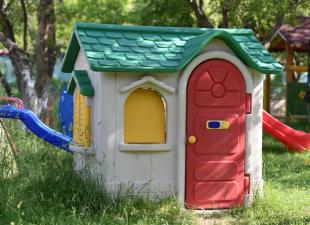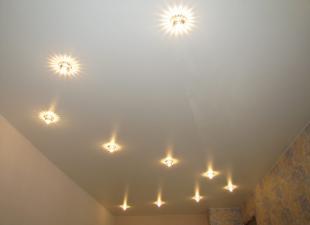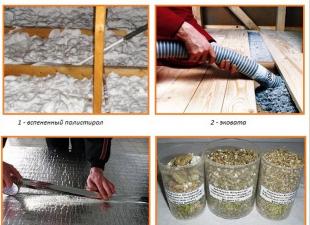Any type of chimney must be cleaned. The frequency of cleaning, the conduct of this event depends on the type of construction, type of heating raw materials, etc. Careful operation is not a guarantor in the absence of soot in the future and in the absence of cleaning in the future, therefore, the question of how to clean the chimney from soot always remains relevant.
The formation of soot in large quantities, the lack of cleaning increases the likelihood of a house or sauna catching fire, since the draft and direct functions of the chimney are reduced. Unfortunately, you do not often find a professional, a master in this matter, who at the right time can clean the structure. Cleaning by a professional means high-quality cleaning in any hard-to-reach place, with any bend in the chimney, checking the technical condition of the structure, which is 100% difficult to achieve on your own.
Chimney clogging reasons
During combustion, firewood emit white and black smoke, the reason for the appearance of the first lies in the water vapor of the wood, and black because of coal, soot, creosote. Black smoke is the reason for the formation of deposits in the chimney, which must be cleaned out. On smooth surfaces, as a rule, soot settles much less than on rough surfaces of pipes. Therefore, smooth pipes are not cleaned as often than brick structures, which require more frequent cleaning.
Rice. 1Cleaning the chimney from soot (Fig. 1) is an important and necessary measure. The more it accumulates, the higher the risk of the following nuances:
- poor permeability of smoke through the chimney;
- the likelihood of ignition of the soot itself and a fire in the house (Figure 2).
Signs it's time to clean the pipe
- The structure must be cleaned if the color of the flame from the combustion of dry firewood is orange.
- There is no thrust, the flame is extinguished - it is urgent to clean it.
- A smell in the room, especially in rainy weather, is a sign that the chimney and stove need to be cleaned.
Chimney cleaning rules
In order to understand how to clean the chimney from soot, to carry out high-quality and effective deep cleaning, it is better to adhere to some rules and listen to the following tips:
- Before getting to the chimney on the roof of the house, it is important to check that all the soot holes in the building are covered. This will help to avoid such unpleasant moments as cleaning the interior from the scattered soot. Otherwise, you will have to additionally clean the premises.
- Chimney cleaning should take place in calm, windless weather. Being on the roof is always dangerous, even with insurance, so the presence of wind is best avoided if you are planning to clean the structure.
- The fireplace is a favorite place for bird nests. Before cleaning, it is worth checking for a nest in the pipe. A low-lying nest should be pushed down from above, or, if possible, reached from above, to clear the area. And then overstep the planned cleaning.
- Cleaning the chimney from soot is often not worth it. The admissible layer of plaque is up to 2mm. If the layer is 2mm or more, chimney cleaning is required.
- If the fireplace is open and has a straight chimney, then it may not be cleaned from the roof. You need to clean the structure from the bottom, where the firebox is.
- After cleaning the fireplace, remove dirt from the opening holes for cleaning with a scoop, a soot spoon and a brush. Residues are removed with a vacuum cleaner.
- The fireplace insert and the blower must be cleaned at last, at the end of the process.
 Rice. 2 Risk of fire if not
Rice. 2 Risk of fire if not periodic cleaning is carried out
What will help clean the chimney
Rarely enough, the owner of a bathhouse, house or his own dacha turns to specialists for help. Usually, the chimney is cleaned independently, on its own using available tools.
Both the Internet and friends will tell you how to clean the chimney from soot. Assistants in such a dirty business are:
- brushes (Figure 3);
- chemical agents;
- folk and sophisticated methods.
Tools to help:
- Metal brush(with a diameter larger than the pipe diameter by 1.2 times). If the section is square or rectangular, then cleaning of such a structure will be convenient if stiff metal bristles are used. Metal ruff, come in cleaning, lowers down with a rope. Therefore, you can additionally use flexible holders by connecting them.
- Scraper. A brush or brush is usually used after scrubbing, especially if the build-up is thick enough.
- Additional core to create gravity (Figure 4).
The kernel will come in handy if the process detects a brick that has collapsed or other elements like debris. The obstacle is pierced by the core, which can be fastened to the cable with a carabiner, dropping it in the center of the chimney.
 Rice. 3
Rice. 3With the help of the core, you can not only remove the obstacle, but also make the ruff or brush heavier. It is important to note that the core diameter was 8.5cm before. Today, the ideal diameter is considered to be a size that overlaps at least 2/3 of the chimney section.
Weights and objects with an offset center of gravity are not suitable for use as a weighting agent. Most likely, this kind of object will simply get stuck in the chimney forever, usually only during dismantling such objects are removed.
Chemicals to help
Prevention is the best way to avoid problems and hard work. Chemicals are helpers in preventive practices. Liquid, powder, briquettes of chemicals can be added with combustible raw materials during the combustion. Excipients, after combustion, emit gases that are not harmful to human health. These gases contribute to the destruction of the deposited soot on the inner walls of the chimney, provoking its shedding.
 Rice. 4
Rice. 4Chimney cleaning powder
There is a large amount of similar powder on the market: anti-carbonic chemical composition (PCA). This mixture is put into the firebox as a whole and burned in its own direct packaging. The manipulation can be carried out separately from firewood or together with raw materials. Before using, you should carefully study the instructions in order to use a certain amount of powder for a certain amount of wood.
Preventive remedies
There are means for prevention, to avoid cleaning, which are sold in packaged pacts of several grams. For example, Czech powder Komіncek. Prevention is carried out for three months. The product is effective for the accumulated layer of soot up to 2mm. A catalytic reaction that converts soot to oxide. From a package caught in a flame (from wood, coals), chemicals are released from the high temperature, which dissolve soot from the walls of the furnace itself and the chimney.
Briquettes (Figure 5)
Bars, briquettes emit volatile substances during combustion. Due to their effect, the thickness of creosote deposits is reduced, draining and crumbling down.
Folk cleaning methods
Potato skins (rice 6) for peeling
Potatoes are rich in starch. Half a bucket of skins is thrown into the fire. During combustion, a large amount of starch is released, which has a destructive effect on deposits. In two to three days of such a procedure, the soot will seriously change its structure, and cleaning by a mechanical method will be easy and effortless.
 Rice. 5
Rice. 5Aluminum for cleaning
Aluminum parts burn well over high heat, blocking the formation of soot. It is desirable that the fire be on charcoal, then the aluminum will not change its color, but really burn. Typically, an aluminum can will burn out in 5 minutes.
Boiled salt for cleaning
The preventive method of cleaning soot in the chimney using boiled salt is effective and cheap. By using salt all the time, carbon deposits will remain in smaller doses. Cooking salt is added to the wood. A handful of salt is enough. The chemical reaction of the salt in the fire and its composition prevents the formation of soot in large quantities. But if the soot layer is already visible enough, then this method will not be successful.
Aspen for cleaning
Aspen wood burns very well. The essence of the method is to create a huge fire in the stove, fireplace, the flame of which will reach the soot and burn it. It is necessary to ensure that sparks do not fly out through the chimney and do not set fire to the roof of the house. In no case should you use flammable substances (gasoline, naphthalene), in order to avoid an explosion and fire. How to understand that it is no longer worth cleaning the pipe. The main sign that it costs more to clean the pipe from dirt is the peeling of black pieces. A sprinkling of a small amount of soot indicates that cleaning needs to be continued.
 Rice. 6
Rice. 6 Any stove, fireplace should work at 100%, and the chimney should be clean and have good draft. Here are some very doable tips for preventing soot formation:
- A coniferous tree is not suitable for permanent and systematic heating. Having in its composition a large amount of resin, firewood burns quickly, leaving behind deposits in the form of resins on the walls of the chimney and firebox.
- Do not use raw wood for heating the fireplace. A newly felled tree has a lot of moisture. From this, a large amount of water vapor, soot, destroying the chimney is released.
- Disposal of household waste in a stove or fireplace is unacceptable, as soon the smoke facility will need to be cleaned. Plastic, plastic, synthetics have a negative impact not only on the environment, but also on the physical condition of the structure.
- Use firewood from well-dried deciduous trees to avoid scouring. Alder and aspen firewood burns at a very high temperature. The flames reach a height of combustion, which allows the interior of the structure to be cleaned. Cleaning occurs involuntarily, without the intervention of mechanical cleaning.
It is quite possible to clean the pipe for the passage of smoke at home, baths. You can clean yourself without experience, the main thing is to adhere to safety rules. It is necessary to clean it by a mechanical method, do not forget that you can periodically clean the fireplace with chemicals.
Briquettes are modern methods, when using them, you will not need to often clean the chimney. For prophylaxis, so that you do not have to clean the firebox and chimney, you can also use preventive folk methods that will effectively help clean your own building from carbon monoxide formation.
 parlini.ru Repair of an apartment, a summer residence and a house.
parlini.ru Repair of an apartment, a summer residence and a house.


